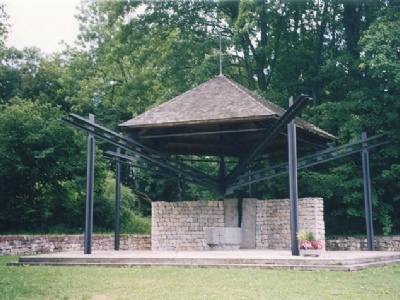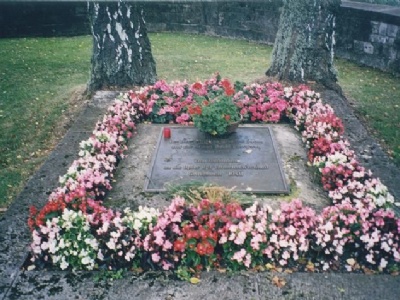Grafeneck
Schloss (castle) Grafeneck is located in a small village Grafeneck about fifty kilometres south of Stuttgart. In 1929, a nursing home for physical invalids was established in the castle. In October 1939, Dr. Herbert Linden from the ministry of health visited the interior ministry of Württemberg. The purpose of the visit was to meet with the state’s head of public health, Eugen Stahle, about a suitable location for a euthanasia center. He recommended the Grafeneck castle and in mid-October 1939 the castle was confiscated and about 10 to 15 local workers began to build a killing centre at the castle. The head of the euthanasia centre was Horst Schumann and his team consisted of 25 male and female nurses. In the summer of 1940, Schumann was transferred to the euthanasia centre Sonnenstein and replaced by Dr. Ernst Baumhardt, who in turn was replaced by Dr. Günther Hencke. Grafeneck was planned and established around the same time as the first killing center, Brandenburg. The geographical distance between them indicates that they had different catchment areas. But just as Brandenburg, Grafeneck’s purpose was to kill mentally and physically disabled german citizens.
Just next to the castle, several barracks were set up where the murder process took place and they were surrounded by a high camouflaged fence to protect the gas chamber and crematorium from outside view. A wooden barracks served as a reception room where patients were registered and asked to undress. Then they had to go into another building where a room had been converted into a gas chamber with fake showers and wooden benches. In a connecting room were the carbon monoxide bottles where an operator via controls let in the amount of gas needed to murder the victims. To begin with, the gas chamber had room for 40 to 50 people but was later rebuilt to accommodate 75 people. The corpses was then carried to a horse stable which had been converted into a morgue. Then they were cremated in one of the two mobile cremation ovens installed in another building.
The heat from the furnaces forced the managment to remove the crematorium roof. Nearby trees were swept down by the ashes and the entire area was cordoned off with warning signs informing about the risk of infection. The first patients were murdered in January 1940. The castle itself was used solely for administrative tasks as well as private rooms for the T-4 staff. Euthanasia continued in Grafeneck until December 1940 when protests from locals became a burden. Therefore, it was decided to close Grafeneck before it resulted in public protests that could seriously harm the Nazi party. When the Nazis decommissioned Grafeneck, all murder facilities were demolished and the operation moved to Hadamar. Therefore, there is nothing left in Grafeneck except some memorials. At least 10,654 people were murdered in Grafeneck between January and December 1940.
Current status: Partly preserved/demolished with museum (2001).
Location: 48°23'41.32" N 09°25'59.60" E
Get there: Car.
Follow up in books: Friedlander, Henry: The Origins of Nazi Genocide – From euthanasia to the final solution (1995).


Most euthanasia centers are relatively unknown and Grafeneck might be the most unknown of the six officially killing centers. Since my visit a new museum has been established on the site which I hope I get the opportunity to visit some day.